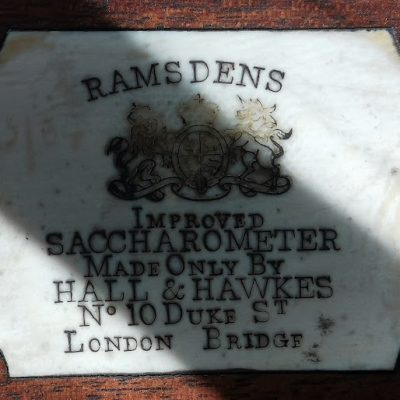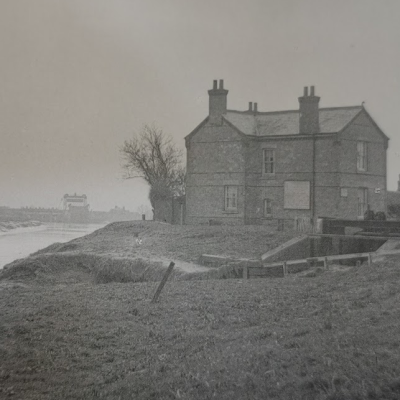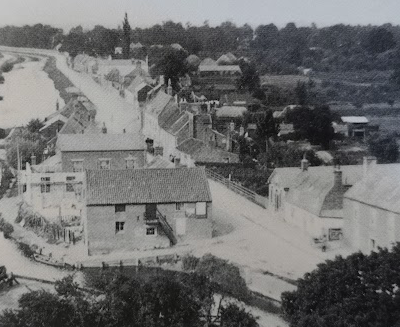Search by topic
- archaeology
- architecture
- bricklayer
- Building of Local Interest
- carpenter
- church
- crime
- dressmaker
- fire
- Great Eastern Railway
- listed building
- medieval
- oral history
- Public House
- Rattee & Kett
- Religious House
- Roman
- scholar
- school
- Then and Now
- tudor
- women
- work
- world war one
- world war two
Search by text
 Popham's Eau, Upwell OS 1900
Popham's Eau, Upwell OS 1900Pophams Eau Bank, Upwell
History of Pophams Eau Bank
Approximate location:
1851 Popham Eau Bank
John Thompson, 21, ag.lab., b Upwell
Mary Ann, 21, b Outwell
1861 Popham’s Eau Bank
William Kitchen, 24, ag.lab., b Norfolk
John Thompson, 31, ag.lab., b Upwell
Mary Ann, 31, b Outwell
Susanna, 9, b Upwell
William, 7, b Upwell
John, 2, b Upwell
George, 3, b Upwell
James, 1, b Upwell
1863
There was a total eclipse of the son when John Jnr was eight years old. He took all his pigs home because he thought it was night and sat down waiting for dinner. Three hours later he realised something was wrong.
1871 Popham’s Eau Bank
John Thompson, 42, ag.lab., b Upwell
Mary A, 42, b Outwell
Susannah L, 20, b Upwell
George, 13, b Upwell
James, 8, b Upwell
Matthew, 6, b Upwell
Charles, 4, b Upwell
Eliza, 2, b Upwell
In The Winter Fens, 1993, by Edward Storey, he describes the life of the Thompson family, as recalled by Laura Addison, John Thompson’s daughter, who in 1993 was about 90 years old. The exact location is a little unclear as the descriptions in the book do not seem to match the descriptions either on the map or recorded elsewhere, but would certainly be in the vicinity marked here.
Edward Storey states that John Thompson was born in Upwell in 1855. The family lived then at a place called ‘Susans’, about three miles from Upwell Church. Elsewhere ‘Susans’ is said to be the same location as ‘Shrewsness’ on the west side of Upwell,
but Popham’s Eau lies to the south of this location so perhaps the whole area to the south west of the village was in practice known as ‘Susans’. The family lived in a water-mill known locally as ‘the pepper-pot’ and sixteen Thompson children were born there. the elder Thompson dictated his life story to John in four exercise books which are now in the Wisbech Museum.
No indication of the mill itself can be found on contemporary maps but the 1861 census confirms the presence of the family.
The account of John’s life includes the following: My father was a shepherd and his earnings were 12s a week from 4 o’clock in the morning till 8 o’clock at night. He had seven cows to milk night and morning and a thousand sheep to look after and had to go out with a team of horses in the middle of the day ….
Father had two gallons of milk from the house each day for the family and very often a sheep’s head and plucks. He was very often brought a half drowned sheep which we called drowned mutton and we sometimes had a barley-bread loaf …..
My father also used to take the toll from the toll-gate and it was a penny for a donkey tuppence for a horse and when they had no money they used to throw us coal, turf and logs of wood for the fire. My father also had an eel greg which some call an eel-hive and when he emptied it into a bucket it was full many times. … We fished in the river and often caught large fish weighing 18-20 lbs each.
By the time John Thompson [jnr] was 7 years old he was earning 4d a day working, including crow-scaring, cow-tending and odd jobs: I can remember being in a gang of twenty or twenty five and we had to pull every weed with two leaves out of the corn and we’d weed 10-15 acres a day. … we had a mile to walk to work and it used to be a very bad road in winter-time and if we got off the path we’d be up to our knees in slub and water.
By the age of 10 he was earning 10d a days and learning how to plough.
His mother Mary would bake 15 loaves of bread at a time as well as all the meat pies on Sundays. The popular meal was hare pie. The old hares were so numerous in the Fens then that they used to lay about the land in furrows and my father could walk up to them and just pick them up.
At the age of twelve John’s wages were to be £12 per year and food for twelve months.
In 1869, aged 14, John was sent to Sutton St James to work for Thomas Bass for £6 per year plus lodging. There he had four cows to milk twice a day and also hand to drive Mrs Bass to Long Sutton market every Friday. The family used cow dung as fuel.
In 1871 John Thompson is listed in the census as a farm servant aged 16 at Guyhirn, Wisbech St Mary, living with the family of George Morton, farmer of 175 acres.
Aged 16 he took a job in Wisbech Fen with an old man Robert Penn who had two sons. His wage was £9 a years plus half a pint of beer every day with his dinner. They all lived in one room; the family sat at one table, the servant girl and John at another.
Aged 20 he was working for Charles Hubbard in Marshland Smeeth as a second horse-keeper responsible for nine horses. the public house in Marshland Smeeth was The Hickathrift kept by John Mace who had four daughter. The third one became Mrs Thompson in 1875 on 8th December.
In 1876 John went to live in Tydd St Giles where he worked for his brother in law who was a thresher. However he had a serious accident with a thresher which led to his left leg being amputated at the knee. he retrained as a cobbler and became well known for making and mending shoes. They were able to move into their own house and garden.
1881 census: John and Martha are living at East Drove, Walpole St Peter. John is 25 and a shoemaker.
1890 16th December: Martha Thompson died aged 38. [according to Edward Storey]
1891 census: John, 35, now agricultural labourer, and Martha, 35, b Marshland Smeeth, living at Nine Drain Bank, Tydd St Giles.
For a time John had two housekeepers, his aunt and his niece. But then he kept on his niece alone.
Later he remarried and started a family.
1911 census: John Thompson, 55, on the parish, b Upwell; Rebecca Thompson, wife, b Wisbech; Laura Edith Thompson, daughter, 7, b Tydd St Giles. Rebecca is listed as having been married 13 years, given birth to six children of whom two are still alive.
1924 14th May: John Thompson died at the age of 69.
Contribute
Do you have any information about the people or places in this article? If so, then please let us know using the Contact page or by emailing capturingcambridge@
License
This work is licensed under CC BY-NC-SA 4.0

















